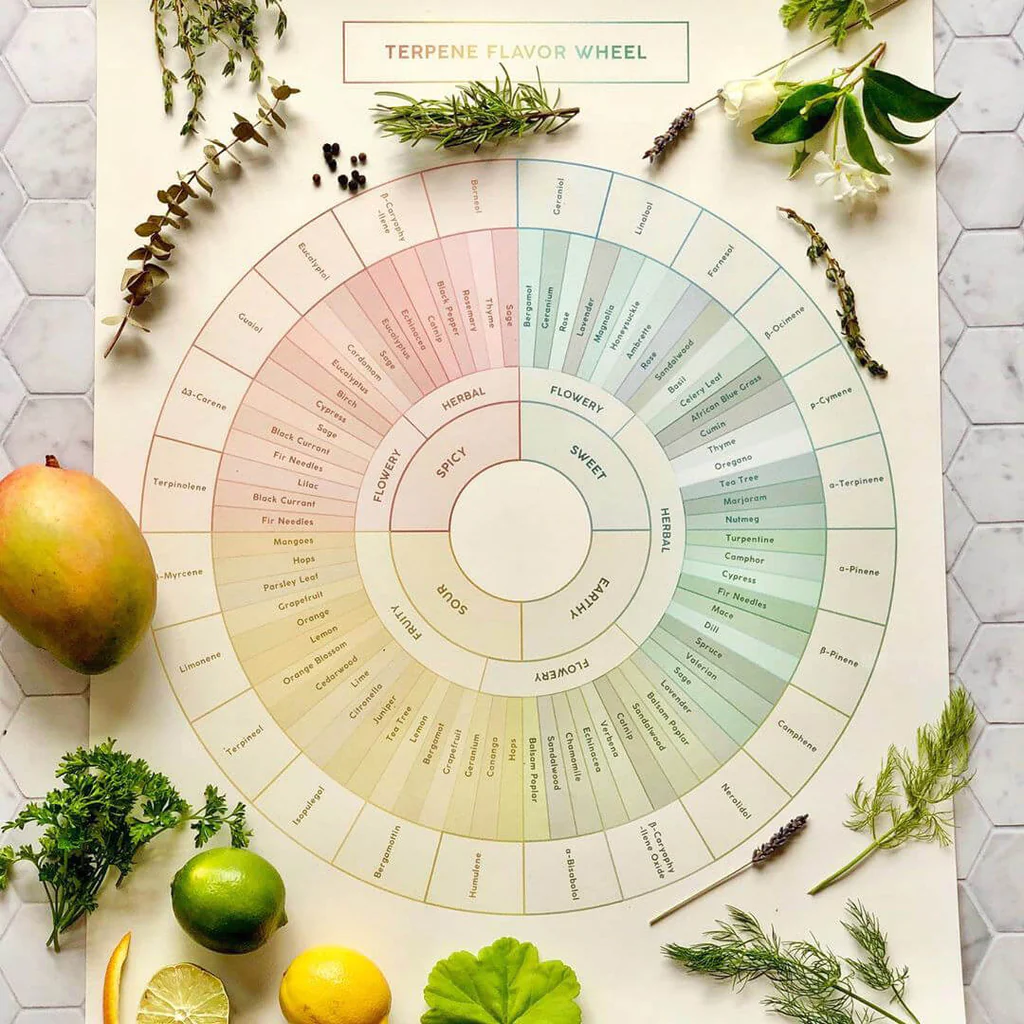No products in the cart.
What Causes the Aroma of Marijuana?
29 Jun 2023

The unmistakable aroma of marijuana has long been a subject of fascination and curiosity. Particularly, as cannabis gains popularity across the globe for both medicinal and recreational purposes. While many people find the smell of marijuana appealing, others find it repulsive. Understanding the chemical compounds responsible for this iconic scent not only deepens our appreciation for the plant. As well as, helping us uncover potential health benefits.
In this comprehensive guide, we will explore the science behind marijuana’s aroma. Primarily, focusing on the recently discovered volatile sulfur compounds (VSCs) and their potential medicinal properties. We will also discuss the role of terpenes in cannabis, how age and packaging affect the smell. Finally, the implications of these findings for cannabis users and the industry at large.
The Science Behind Cannabis Aroma: Terpenes and Volatile Sulfur Compounds
Terpenes: The Building Blocks of Cannabis Aroma
Historically, the primary focus of research into the scent of cannabis has been on the secondary compounds known as terpenes or “terps.” Terpenes are organic compounds found in many plants, including cannabis, and are responsible for their unique smells. In cannabis, terpenes are produced in the plant’s trichomes. They are stalky appendages on the surface of the flower. With over 200 known compounds or metabolites associated with scent. Terpenes play a vital role in creating the diverse range of aromas present in different strains of cannabis.
Terpenes serve important biological functions, attracting beneficial animals to plants or repelling harmful predators. In addition to providing distinct smells, terpenes have also been shown to have various therapeutic effects. Follwing, different terpenes associates with different potential benefits.
Volatile Sulfur Compounds: A New Discovery in Cannabis Aroma Research
Recent research has shifted the focus from terpenes to a new class of compounds responsible for the distinctive skunky scent of cannabis: volatile sulfur compounds (VSCs). A groundbreaking study published in the American Chemical Society identified a family of VSCs in Cannabis sativa responsible for the plant’s signature skunk-like aroma of marijuana. Some of these compounds had never been identified in nature before. Thus, opening up new avenues for research into their potential medicinal properties.
The study found that the concentration of VSCs in a cannabis plant determines the intensity of its skunky smell. One particular VSC, known as VSC3, is especially potent, producing an “intense, sulfuric, skunky aroma even in extremely dilute concentrations.” Interestingly, VSC3 has also been found in “skunked beer,” which is beer that has gone bad due to exposure to UV light.
Further smell tests conducted by the researchers confirmed that VSC3 is the primary source of cannabis’s characteristic scent. With other VSCs potentially intensifying or modulating the aroma.
The Potential Health Benefits of Cannabis Aroma Compounds
The Curious Case of Garlic: A Clue to Cannabis’s Untapped Health Benefits?
The discovery of VSCs in cannabis has led researchers to draw parallels with other plants known for their pungent smells, such as durian, hops, and garlic. Garlic, in particular, has a range of well-documented health benefits, including anti-carcinogenic properties, protection against colorectal cancer, and improving cardiovascular health.

The similarities between the VSCs found in garlic and those in cannabis have led researchers to speculate that these newly discovered compounds may also possess medicinal properties, warranting further investigation.
Terpenes: More Than Just Aroma
In addition to their role in creating the diverse range of cannabis smells. Terpenes have been shown to have various therapeutic effects. Different terpenes have been associated with different potential benefits. Such as anti-inflammatory, anti-anxiety, and pain-relieving properties.
Researchers are still uncovering the full extent of the potential health benefits associated with terpenes. However, it is clear that these compounds play a crucial role in the medicinal properties of cannabis.

How Age Affects Cannabis Smell
One of the intriguing findings of the VSC study was the impact of age on the potency of cannabis smell. The researchers found that the concentration of VSCs. Thus, the intensity of the skunky aroma – decreased significantly over time. In other words, like pungent spices, the odor of cannabis has a shelf life.
The study shows that cannabis samples tested four days after packaging had a VSC concentration nearly three times greater than cannabis tested 46 days later. This finding confirms what many cannabis users already suspected: older cannabis tends to smell less skunky.
The Role of Packaging in Preserving Cannabis Odor
The type of packaging for cannabis products can also influence the strength of the odor. The VSC study found that airtight packaging, such as plastic jars with heat-sealed aluminum film. This was more effective in preserving the concentration of VSCs compared to standard zipper-lock plastic bags. This suggests that airtight containers may help maintain the potency of cannabis smell over time.
However, it’s worth noting that previous studies have not found a significant effect of zipper-lock bags on the concentration of cannabis odors. So new research to confirm the optimal packaging methods for preserving the aroma of marijuana.
Cannabis Smell and Allergies: A Growing Concern?
As cannabis use becomes more widespread. Concerns about the potential health risks associating with exposure to cannabis smell. In particular, inhalation and consumption of cannabis link to asthma and allergies, which experts speculate may increase as legalization continues in the US and abroad.

Understanding the chemical compounds responsible for cannabis’s distinctive aroma and their potential health effects are crucial. Addressing these concerns and ensuring the safe use of cannabis products.
The Impact of Aroma of Marijuana on the Industry and Society
As the cannabis industry continues to grow, the issue of cannabis smell has become increasingly relevant. In states like Colorado, where recreational use of cannabis has been legal since 2012. There have been reports of complaints related to cannabis smells. In response, the Denver Department of Environmental Health created a “Nasal Ranger” position. They measure detectable levels of odors from cannabis, among other sources.
As more people use cannabis, understanding the science behind its aroma and its potential health benefits and risks. This will be essential in shaping regulations and public perception of the plant.
Conclusion
The iconic aroma of marijuana is a complex interplay of chemical compounds. With recent research uncovering the crucial role of volatile sulfur compounds (VSCs) in creating the plant’s signature skunky scent. The discovery of VSCs in cannabis not only deepens our understanding of the plant’s aroma. However, it also opens up new avenues for research into potential medicinal properties.
As the cannabis industry continues to grow and evolve. A deeper understanding of the science behind cannabis smell will be critical in addressing the potential health benefits and risks associates with its use. From terpenes to VSCs, the compounds responsible for the aroma of marijuana offer a fascinating window into the complex world of cannabis.





